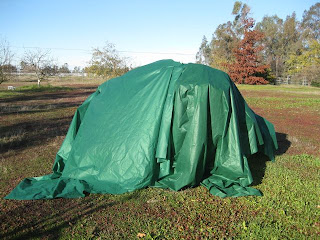Should gardeners be concerned about global warming? Politics aside, climate change is already manifesting itself in our yards. The Climate Nexus think tank explains that what we are seeing is called “season creep”: winters are shorter and milder, causing some plants to bloom earlier than we would normally expect. For example, many area fruit and nut trees were ahead of their typical blooming curve, sending out blossoms in an atypically warmer early February before gardeners were ready to apply their last round of dormant spray.
Although that is more of an inconvenience than a problem, climate change is producing other, more profound effects in our yards, according to Climate Nexus:
• Frost vulnerability. High winter temperatures can create earlier flowering schedules, leaving blooms at risk of a late freeze. Although it sounds counter-intuitive given the warming we are experiencing, cold snaps are still projected to happen even during warmer-than-average springs. This is of greatest concern to commercial fruit farmers, who lose their crop if a frost destroys the flowers. Or fruit. At the other end of the calendar, early freezes in the fall can cause losses to many summer crops that are still being harvested.
 |
| Frosty the Pummelo |
On November 10, 2011, our area shivered through one of the earliest freezes on record: 32 degrees, 11 degrees below average. Bell pepper and lettuce growers reported crop losses after that incident. In addition, backyard gardeners who were still harvesting tomatoes suffered, too. And this week's forecast? Rain, thunderstorms, hail ...
and cold. Overnight lows are expected to dip to 30 degrees in parts of
Sacramento on Tuesday night. A normal low for mid to late February is 44
degrees. The record low temperature for Tuesday? 33 degrees.
• Species mismatch. Research shows that species differ in their ability to adjust life cycles to warming temperatures. If one species adjusts and the other does not, for instance, flowering times can end up out of sync with peak pollinator activity.
• Species mismatch. Research shows that species differ in their ability to adjust life cycles to warming temperatures. If one species adjusts and the other does not, for instance, flowering times can end up out of sync with peak pollinator activity.
 Mismatches can also occur between predators and their prey, which may affect gardeners interested in attracting birds to their gardens. For example, the pied flycatcher now migrates at the wrong time relative to the availability of its insect prey, and as a result has experienced population declines of 90 percent in some areas.
Mismatches can also occur between predators and their prey, which may affect gardeners interested in attracting birds to their gardens. For example, the pied flycatcher now migrates at the wrong time relative to the availability of its insect prey, and as a result has experienced population declines of 90 percent in some areas.• Pests and invasives. Season creep provides favorable conditions to many pests and invasive species. In the western U.S., harsh winters normally cull the bark beetle population, but recent mild winters have allowed their population to skyrocket. Gypsy moths and tent caterpillars are also expected to expand their ranges thanks to the changing seasons. Invasive plant species are by no means uniform in their response to climate change, but research indicates that in many cases they will be able to adapt more effectively to season creep than native species. This was the case at Thoreau’s Walden Pond, where invasive species slowly drove out native plants as the climate shifted.
So, what is a gardener to do? Be vigilant. And keep those frost covers handy this week.

My Santa Rosa plum has always been the 1st deciduous fruit tree in the garden to bloom. 2013 is an average year. Bakersfield area almond orchards look to be a bit behind. I wonder if there is any correlation with the number of fog delays schools experience and "climate change".
ReplyDeleteI am not a believer but have an open mind.
Not seeing that here. Earlier start to spring maybe but always get whacked with late season frost after usual frost out date.................
ReplyDeletePerhaps maybe the growing season lasts a little longer into fall but not always the case
Greg Draiss
The Real Dirt on Gardening
Thanks for this most informative and pertinent post. I run a small nursery in the Eastern Cape Province of South Africa and I have watched how so many plants in my garden are confused. My orange trees bloomed and fruited three times in one year and many plants are flowering at really odd times. Exceptionally heavy rains and a minor flood last spring were followed by a couple of days of 'Berg Wind' (a hot wind blowing from areas further inland) and temperatures soared to 98°F. What leaves were not burned to a golden crisp acquired an interesting assortment of rusts and mildews in the resulting humidity. I fear all warnings have come too late.
ReplyDelete